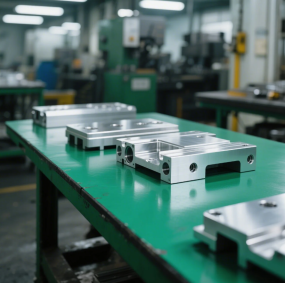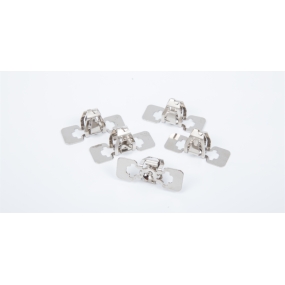CNC machined parts may experience scratches during the machining process due to various reasons. To avoid this situation, the following aspects can be taken into consideration: selecting appropriate cutting tools: ensuring the use of appropriate cutting tools, including tool materials, edge geometry, and cutting conditions. Choose cutting tools that match the workpiece material to reduce the risk of scratches. Control the feed and cutting speed: Adjust the feed and cutting speed appropriately to avoid excessive cutting force caused by high speed and feed amount, which can lead to scratches. Using coolant or lubricant: Using coolant or lubricant during machining can lower cutting temperature, reduce cutting force and friction, and help avoid scratches. Optimize machining path: Reasonably plan the machining path to avoid unnecessary movement and collision of the tool on the surface of the workpiece, thereby reducing the possibility of scratches. Keep the workbench and fixtures clean: Ensure that the surfaces of the workbench and fixtures are clean and free of impurities to avoid scratches caused by impurities or particles during the machining process. Regular inspection and maintenance of equipment: Regularly inspect the wear and tear of key components such as cutting tools, fixtures, and transmission systems of CNC machine tools, replace or repair them in a timely manner, and ensure the normal operation and machining accuracy of the equipment. Operating standards: Operators need to be familiar with the operating procedures and processing flow of CNC machine tools, strictly follow the requirements for operation, and avoid scratches caused by misoperation or improper operation.



 Spanish
Spanish Arabic
Arabic Portuguese
Portuguese Belarusian
Belarusian Japanese
Japanese Russian
Russian Icelandic
Icelandic Bulgarian
Bulgarian Azerbaijani
Azerbaijani Estonian
Estonian Irish
Irish Polish
Polish Persian
Persian Boolean
Boolean Danish
Danish German
German French
French Filipino
Filipino Finnish
Finnish Korean
Korean Dutch
Dutch Galician
Galician Catalan
Catalan Czech
Czech Croatian
Croatian Latin
Latin Latvian
Latvian Romanian
Romanian Maltese
Maltese Malay
Malay Macedonian
Macedonian Norwegian
Norwegian Swedish
Swedish Serbian
Serbian Slovak
Slovak Slovenian
Slovenian Swahili
Swahili Thai
Thai Turkish
Turkish Welsh
Welsh Urdu
Urdu Ukrainian
Ukrainian Greek
Greek Hungarian
Hungarian Italian
Italian Yiddish
Yiddish Indonesian
Indonesian Vietnamese
Vietnamese Haitian Creole
Haitian Creole Spanish Basque
Spanish Basque










